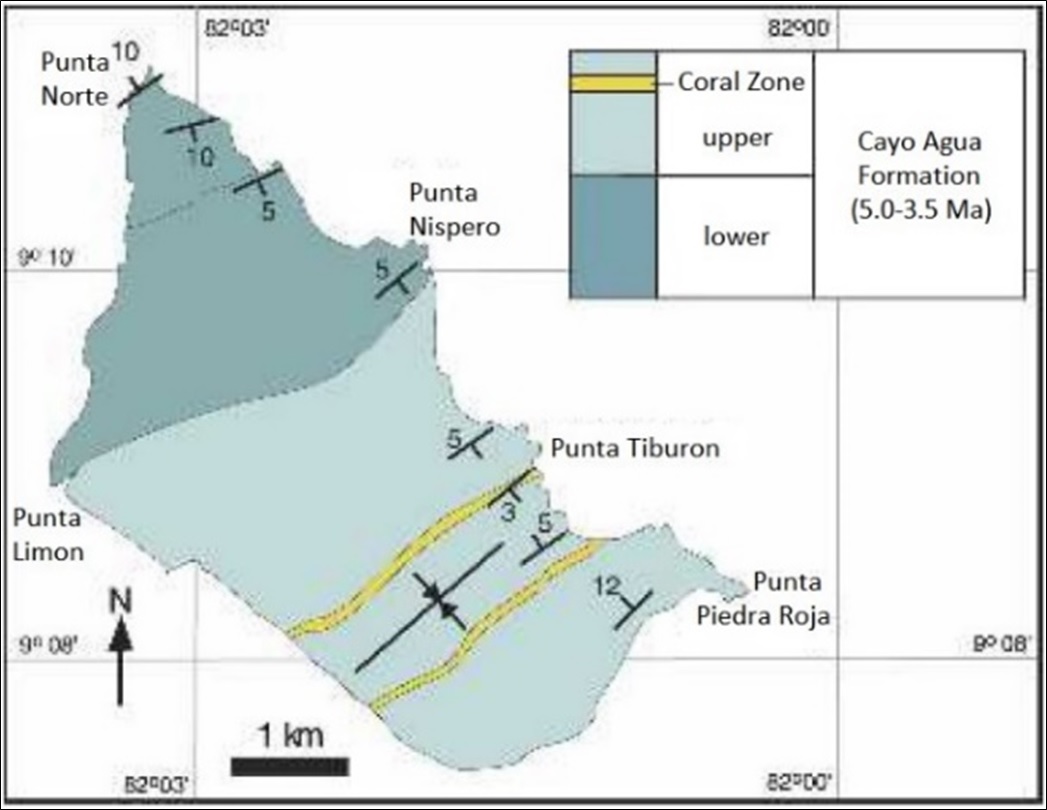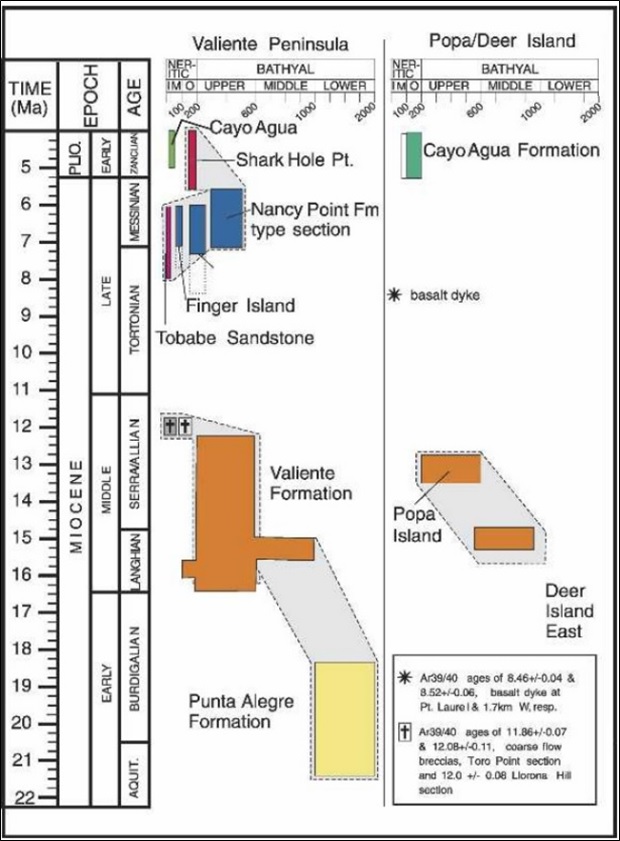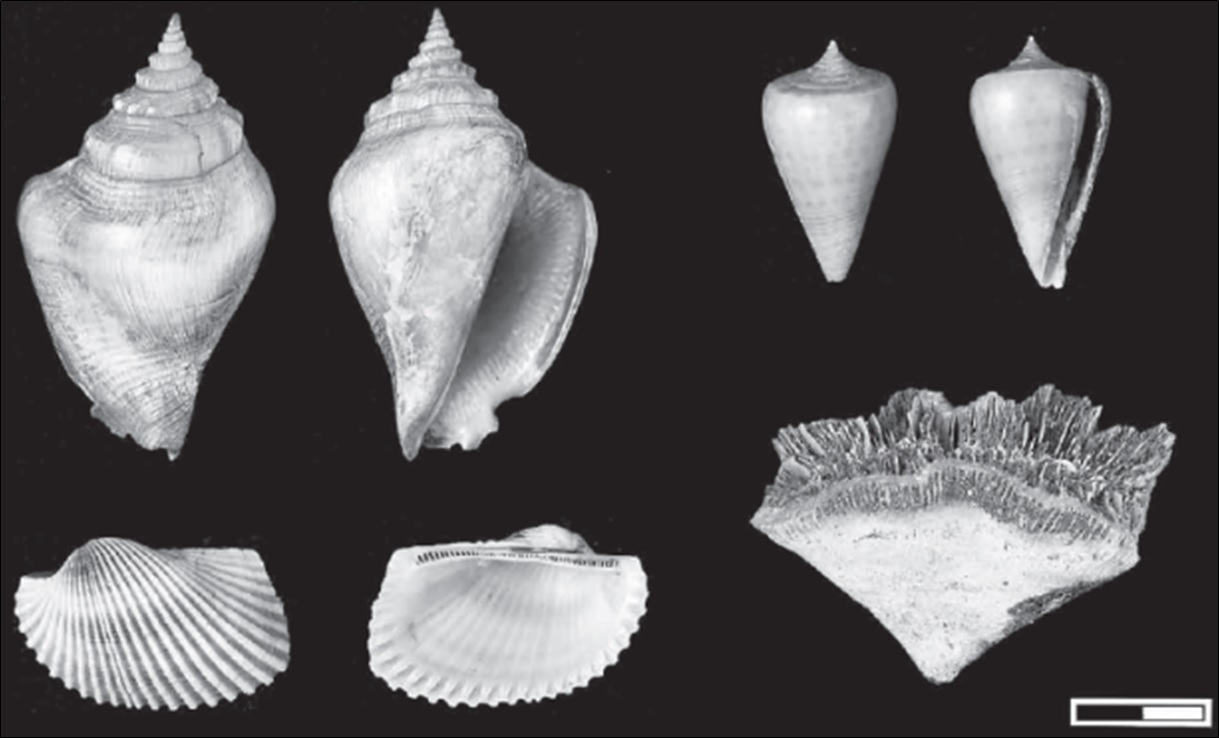Cayo Agua Fm
Type Locality and Naming
A detailed section measured on Cayo Agua has revealed that the stratotype is slightly more complex structurally than indicated by Coates et al. (1992). The stratotype for the formation (Section 19 in Coates (1999)) is now calculated to be slightly thinner because a small block immediately to the south of Nispero point is rotated to dip to the northeast and repeats a portion of the section (Section 20 in Coates (1999)). The defined stratotype (Section 19 in Coates (1999) runs from just south of North Point along the east coast southward to Nispero Point, and then from the northernmost to the southernmost exposures on the coast surrounding Tiburon Point. Additional reference sections described by Coates (1999) are Section 16, immediately west of North Point; Section 18, north of Red Rock Point; and Section 17, on the south coast immediately west of Red Rock Point.
[Figure 1. Geological map of Cayo Agua Island. Coates et al. (2005)]
Synonym:
Lithology and Thickness
Thickness: 293 m according to Section 19 in Coates (1999).
The stratigraphic order of the Tobabe Sandstone Fm, Nancy Point Fm and Shark Hole Fm (three of the five formations which make up the Bocas Del Toro Gr) has been determined by physical superposition. The two remaining formations of the Bocas Del Toro Gr (Escudo De Veraguas Fm and Cayo Agua Fm) as well as the younger Pleistocene Swan Cay Fm are known only on islands and their position relative to the other units has been determined by biostratigraphic evidence (Figure 2). The age of the Cayo Agua Fm is dated at the base ∼5.0-3.5 Ma and at the top 3.7-3.4 Ma, which suggests it is a contemporary, shallow water equivalent of the Shark Hole Point Fm and the lowermost part of the Escudo De Veraguas Fm.
[Figure 2. Correlation of measured sections in the Bocas del Toro Basin. Coates (1999). (Reproduced with permission of the Paleontological Research Institution, Ithaca, New York)]
Relationships and Distribution
Lower contact
Upper contact
Regional extent
GeoJSON
Fossils
[Figure 3. Representative fossils of the Cayo Agua Fm, Bocas del Toro. Nicely preserved shells of the herbivorous Strombus sp. (top left). Species of the predator gastropod Conus sp. (top right). The filtering bivalve Anadra (Arcidae family) (bottom left). An ahermatipic coral (which lives without symbiotic algae) of the family Caryophyllidae (bottom right). Scale = 2cm. O’Dea et al. (2007)]
Age
Depositional setting
Additional Information
References: Olsson (1922); Jung (1989); Cairns (1995); Collins et al. (1999a & 1999b); Coates (1999); Coates et al. (2005) ; Todd & Collins (2005); O'Dea et al. (2007); Beu (2010); Landau et al. (2012b) ; Schwarzhans et al. (2013); Aguilera et al. (2016).


